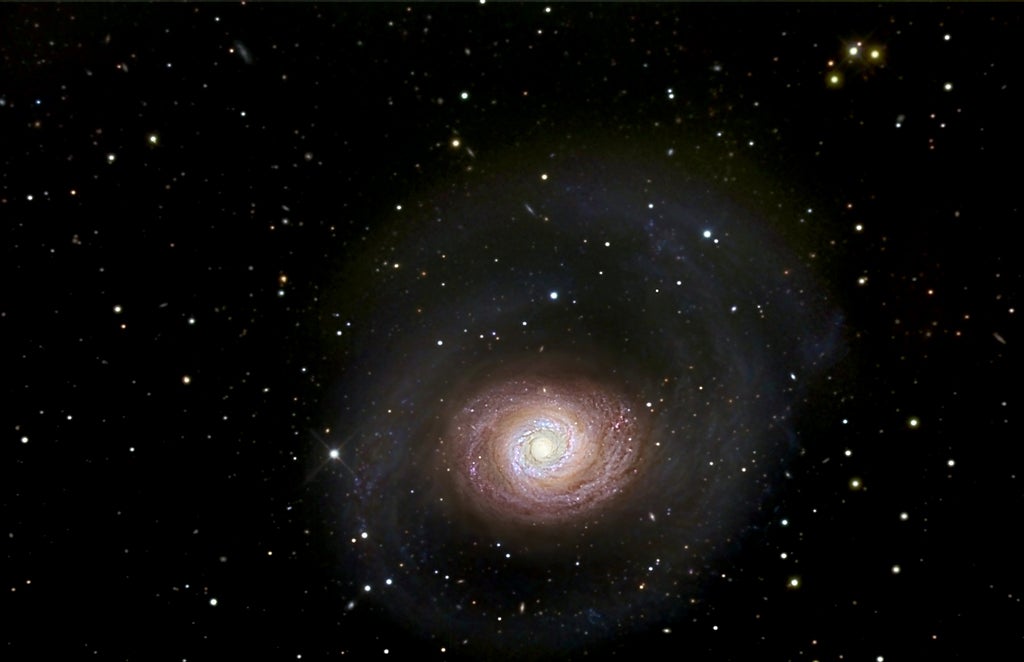Nestled between the two brightest stars in Canes Venatici lies M94, a beautiful spiral galaxy 16 million light-years distant.
Pierre Méchain discovered M94 on March 22, 1781, and communicated its position to Charles Messier. Messier saw a “nebula” with a bright center surrounded by a condensed halo. But William Parsons, Earl of Rosse, found the “nebula” broken into patches — suggesting that the “object will probably turn out to be a spiral” — with “much faint outlying nebulosity.”
Lord Rosse’s words were prophetic. M94 is a nearly face-on early spiral galaxy that only 10 million years ago may have experienced a violent explosion, which disgorged millions of solar masses of material. The galaxy possesses a curious multi-layered appearance, including a central “spiral” about 30,000 light-years across with a broad, faint outer ring some 40,000 light-years farther out. This outer “ring” is actually two giant, star-forming spiral arms extending from the galaxy’s inner disk.
M94’s tightly wrapped inner arms appear yellowed with age and show little evidence of recent star formation. In contrast, the galaxy’s nuclear region reveals an unusual starburst ring and two point sources, both bright in ultraviolet light. This suggests that two objects — compact star clusters or supermassive black holes — are in the final stages of merging.
Under moderate to high powers through a telescope, the 8th-magnitude galaxy’s disk becomes a hypnotic sight: Its bright core with a central pip, surrounded by a soft gel-like elliptical disk, looks like an eye staring back at you. The galaxy’s dim outer rings can be spied through 4-inch telescopes under dark skies as a soft halo of light. Larger apertures will resolve its ringlike structure more clearly.
Make sure to explore Astronomy’s full list of 101 cosmic objects you must see. New entries will be added each week throughout 2022.
To get the latest astronomical news and observing content delivered directly to your door, subscribe to Astronomy magazine today!










